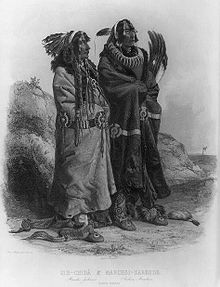- Deerskin trade
-
The deerskin trade between Colonial America and the Native Americans was one of the most important trading relationships between Europeans and Native Americans, especially in the southeast. It was a form of the fur trade, but less known, since deer skins were not as valuable as furs from the north (such as beaver). Colonial deerskin exports were an important source of raw material for the European markets. The Cherokee mainly traded their deer-skins to the French and Spanish, and the Shawnee traded deer skins with the English colonies to the north and east.
By 1750, deer were becoming harder to find in Cherokee territory. So large was the scale of the trade that in time deer became nearly extinct in the southeast. It also radically altered the social make-up of the Cherokee because the men were increasingly absent from towns (for long periods to hunt deer). Concurrently, Cherokee society was undergoing a growing dependence on European trade goods. These events contributed to growing tensions and conflict between the Indian tribes themselves, as well as with the Europeans.[1]
Deerskin were used to produce buckskin, as well as a chamois like leather, used for the making of gloves, bookbinding, and many other things.
See also
- Deer hunting
- Leather currency
Notes
- Drake, Richard B. "A History of Appalachia". University Press of Kentucky (2001).
References
- ^ Davis, Donald Edward (2000). Where There Are Mountains: An Environmental History of the Southern Appalachians. Athens: University of Georgia Press.
External links
- English Trade in Deerskins and Indian Slaves, New Georgia Encyclopedia
Categories:- Fur trade
- Cherokee tribe
- History of the Thirteen Colonies
- Pre-state history of South Carolina
Wikimedia Foundation. 2010.

